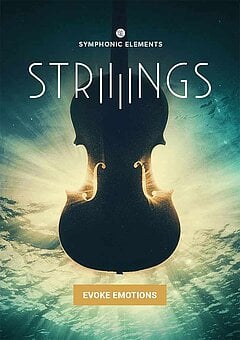How to Write Emotional Film Music
A simplified way to write music that tugs at the heartstrings, captures the mood perfectly, and leaves your listeners in tears
FEBRUARY 14TH, 2021
Here we’re going to dive into how to compose the best emotional film music possible, from inspiration all the way to a finished song. If you’re a film composer or want to get into the field, this should be a great insight into how you can improve your writing process and make it more fun!
How can music change the emotion in a film?
Try watching parts of your favorite movies with the audio muted — and listen to how much is lost. It’s easy to think that the soundtrack’s job is simply to underscore the events on screen ... but that’s not completely true. Music is so powerful that it can tell us what to feel, exactly when to feel it — and if it’s done well, you have little choice but to feel the way the composer tells you to. Check out this video of the Star Wars throne room scene with the music stripped out (it feels really weird):
After watching that, you shouldn’t have any doubts about how completely music changes the tone of a scene! If you decide to work in film music, you’ll probably end up working on some projects that don’t quite sell the scene on their own — which means that your job is to analyze the scene, diagnose what it needs, and deliver that through the soundtrack.
You’ll work much faster (and with less stress) if you start off with solid sources of inspiration. Find some soundtracks you like on Spotify and skim different songs for anything that catches you as being particularly sad, joyful, hopeful, etc. Then take those songs and put them in a Spotify playlist that you can play before you write music. You can even create a playlist folder and split them out into different playlists by emotion: Anger, Despair, Triumph, etc. Refer back to UJAM’s Top 10 Tips for a Music Production Workflow — #5 goes in-depth into finding inspiration in your writing process.
Capturing the emotion of a scene
The first step here is about communication; if you’re working with a client, usually you’ll be speaking with the director and/or producer. Be absolutely certain you understand their creative vision and what they want the soundtrack to do for the film. They may not be able to put it exactly into words ... so it’s your job to decipher it! When in doubt, send them samples from the Spotify playlists you curate and ask if they evoke the desired feeling. This helps you narrow down your list of references, which in turn focuses you and gives you a much better chance of writing music that the client loves!
In addition, the entire time you’re watching the scene without music, ask yourself the question: “What is this scene trying to accomplish? How can I help it do that through the soundtrack?” You’ll get better (and faster) at answering this question as you work on more films. If the scene is designed to scare viewers, that probably means you need to write something ominous or unsettling, perhaps even with dramatic hits at key moments to startle the audience. There’s no right or wrong way to do this, but every time you watch a movie in the future, listen carefully to the soundtrack, think back to the questions above and ask yourself: “How did the composer answer these questions? Why did they answer them the way they did?”
This approach requires a lot of thought, and you’ll end up getting stumped at times. That’s part of the path to mastery! Every time you watch a movie, think about how the soundtrack complements the scene. Eventually, you might get this nagging feeling that you disagree with the composer’s choice — and that’s great! It means you’re exercising your critical thinking and your standards are growing. You may even disagree with the choices of some of your favorite composers, and that’s okay. The unique decisions you make are what will set you apart as a film composer!
What music scales and chords create which emotions?
It makes sense to always use major keys for ‘happy’ songs and minor keys for ‘sad’ ones ... but it’s not always that simple. Labor of Love (by Michael Giacchino) from Star Trek is an incredible example of this — it’s entirely in a major key, and in a different context it could sound uplifting ... but it plays during a bombastic scene involving death. This is an unusual approach, but when it’s used in the right moment, the effect is dramatic and grabs viewers’ attention.
But yes, most of the time, your sad songs will be in minor keys. The song’s key, plus which chords get the most focus, largely control the feel of the song. Here are a few examples:
- Key of C minor -> hang on the chords G minor and then Ab major (V minor and bVI major if you want to be key-agnostic) ... this focus on a major chord in a minor key, especially with the rise from a lower note, gives a hopeful feeling
- Key of C major -> hang on the chord F minor (IV minor) ... this creates a very low-energy pull, giving a despairing feeling
- Key of C major -> hang on the chord F major (IV major) ... this again creates a low-energy pull, but in a major key, you can use this to create a wistful feeling
There are plenty of other variations of this, and these are just isolated moments. It’s tricky to sustain a feeling throughout a song — which is why it’s so useful to have references. When you’re not sure how to create and maintain a specific feeling throughout a song, see how different songs in your playlist accomplish it. If you can, combine their different approaches to create something unique!
What instruments to use
When it comes to writing emotional music, you’ll often reach for a string section first — in part because bowed strings are so expressive. They’re also very difficult to recreate in a digital environment, exactly for that reason ... but Hans Zimmer allowed UJAM to take some of the best recordings from his private strings library and put them into our plugin, STRIIINGS. There’s a preset called Sustains Full Neutral that allows you to create romantic, cinematic chords that you can easily drop into your songs at key moments, allowing you to easily control the emotional temperature of the song.
We had the chance to sit down with film composer and music producer Laura Escudé about her writing process, and how she uses STRIIIINGS as a jumping off point when she’s feeling stuck (even though she has years of experience writing for strings):
Piano is also a great choice, particularly when you want something intimate. It’s one of the few instruments that can perform an entire piece on its own, and it’s suitable for fast and slow passages, along with everything in between. If you want to quickly reference piano pieces that masterfully take you through a tremendous variety of emotions, listen to the complete Final Fantasy Piano Collections:
Woodwinds, brass, percussion and synths are all viable and often necessary — but you’ll probably find that the core of nearly every emotional soundtrack is strings or piano (or both), and additional instruments are added in to support and complement them.
How do I make my music sound sad?
On one last note, no discussion of emotional music would be complete without talking about writing for sad scenes — and just in time for Valentine’s Day, it never hurts to know how to write for heartbreak (as long as you make it happy in the end ... most of the time!). It’s easy to over-dramatize sad scenes to the point of becoming cheesy; check our tips below to write effective, heartfelt sad music:
- Most of the time (but not always), the music will be slow and frequently use rallentando (gradual decreases in speed); a great example of this is Samuel Barber’s classic Adagio for Strings.
- When in doubt, write less — it’s easy to ‘over-compose’ sad music by making the melody long and winding. That’s why many older film soundtracks now sound dated or corny — by today’s standards, many of them are a bit much, and are often parodied during comical movie scenes in which the characters are jokingly sad. If your chord progression works with a minimalist melody and harmony, feel free to leave it as is! Sometimes your job is quick and simple, and there’s no need to be ashamed by leaving it as is.
- Listeners tire of a composer beating them over the head repeatedly with a single emotion. To keep things fresh, get rid of chords completely every now and then — have every instrument hold the same note for a while, then introduce a few notes that don’t imply a major or minor scale. Once they’ve had a little break, you can build up the sadness again, and listeners are far more likely to mentally stay with you the entire time.
There are tons of other principles we could list out, but these should be enough to get you started!
Stay up to date
Sign up and we’ll send you an e-mail with product news and helpful stuff every now and then. You may unsubscribe at any time.
Defy Limits
We develop software solutions that enable people to create, consume and interact with music.




